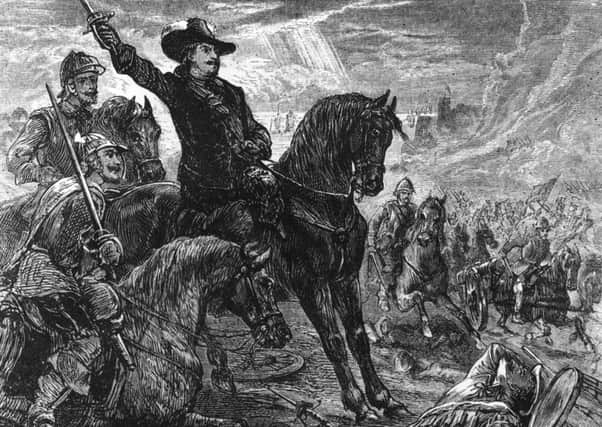Scots soldiers unearthed in England 400 years on


The clash was one of the most brutal, bloody and short battles of the 17th-century civil wars, with English forces defeating the Scottish Covenanters in under an hour. Up to 5,000 Scots died on the battlefield and a further 6,000 were captured and marched south.
Many perished en route, but estimates suggest 3,000 survivors were imprisoned in Durham Cathedral and Castle. Some were eventually shipped as convict labourers to British colonies overseas but up to 1,700 are thought to have died and been buried in Durham.
Advertisement
Hide AdWhat happened to their bodies has been a mystery for nearly four centuries. Now experts at Durham University may have solved the puzzle.
Initial analysis of the jumbled remains of 29 bodies found during excavations in the former castle grounds in 2013 failed to pinpoint their origins. But fresh evidence has led the researchers to conclude the bones belonged to the Dunbar prisoners.
“This is an extremely significant find, particularly because it sheds new light on a 365-year-old mystery of what happened to the bodies of the soldiers who died,” said Richard Annis, senior archaeologist for university’s Archaeological Services arm. “Their burial was a military operation: the dead bodies were tipped into two pits, possibly over a period of days.
“They were at the far end of what would have been the Durham Castle grounds, as far as possible from the castle itself – they were out of sight, out of mind. It is quite possible that there are more mass graves under what are now university buildings.”
Initial radiocarbon dating had indicated an earlier date of death than the 1650 Dunbar battle However, further analysis – plus evidence that some prisoners had smoked clay pipes, which were commonly used in Scotland from 1620 – put the date between 1625 and 1660.
The researchers say the revised dates, combined with the nature of the graves, the fact the skeletons were males aged 13 to 25 years old and isotope analysis suggesting Scottish origins, confirms they are the lost soldiers.
Advertisement
Hide Ad“Proving a theory in archaeology involves assembling lots of different types of evidence and piecing the jigsaw together so that we can make an informed assessment,” said senior lecturer Dr Andrew Millard.
“Taking into account the range of detailed scientific evidence we have now, alongside historical evidence from the time, the identification of the bodies as the Scottish soldiers from the Battle of Dunbar is the only plausible explanation.”
Prayers at Durham Cathedral tomorrow will mark the anniversary of the battle and commemorate the Scotsmen.